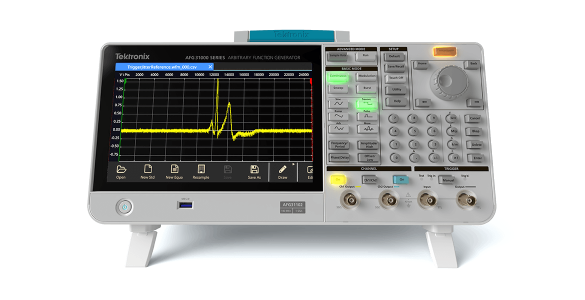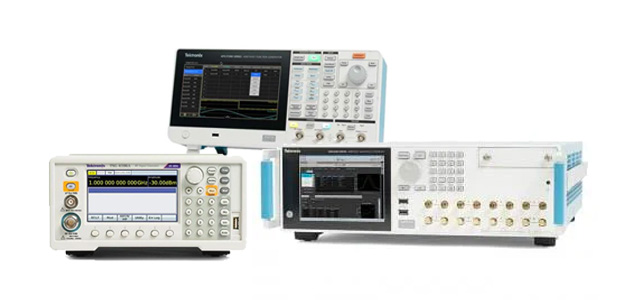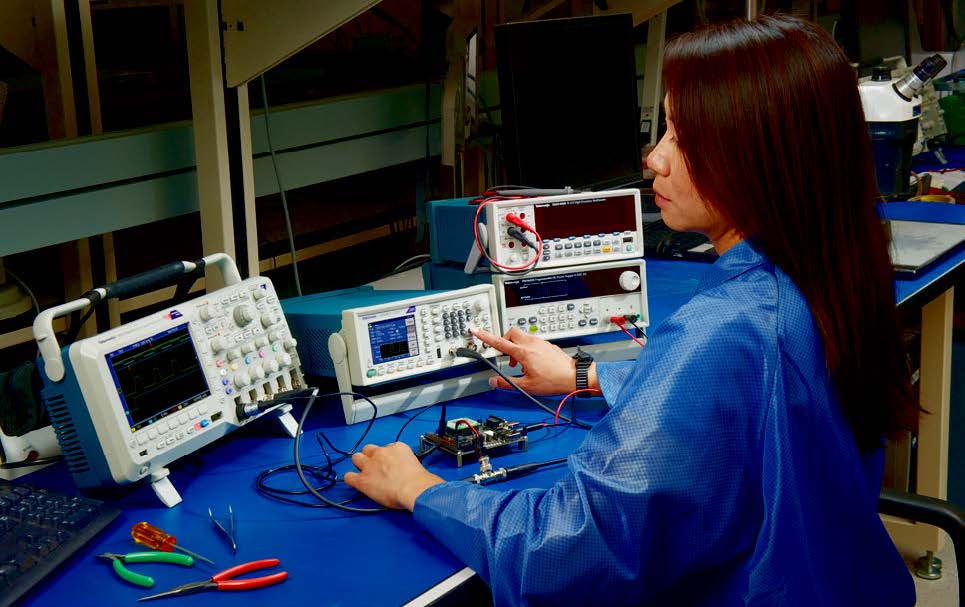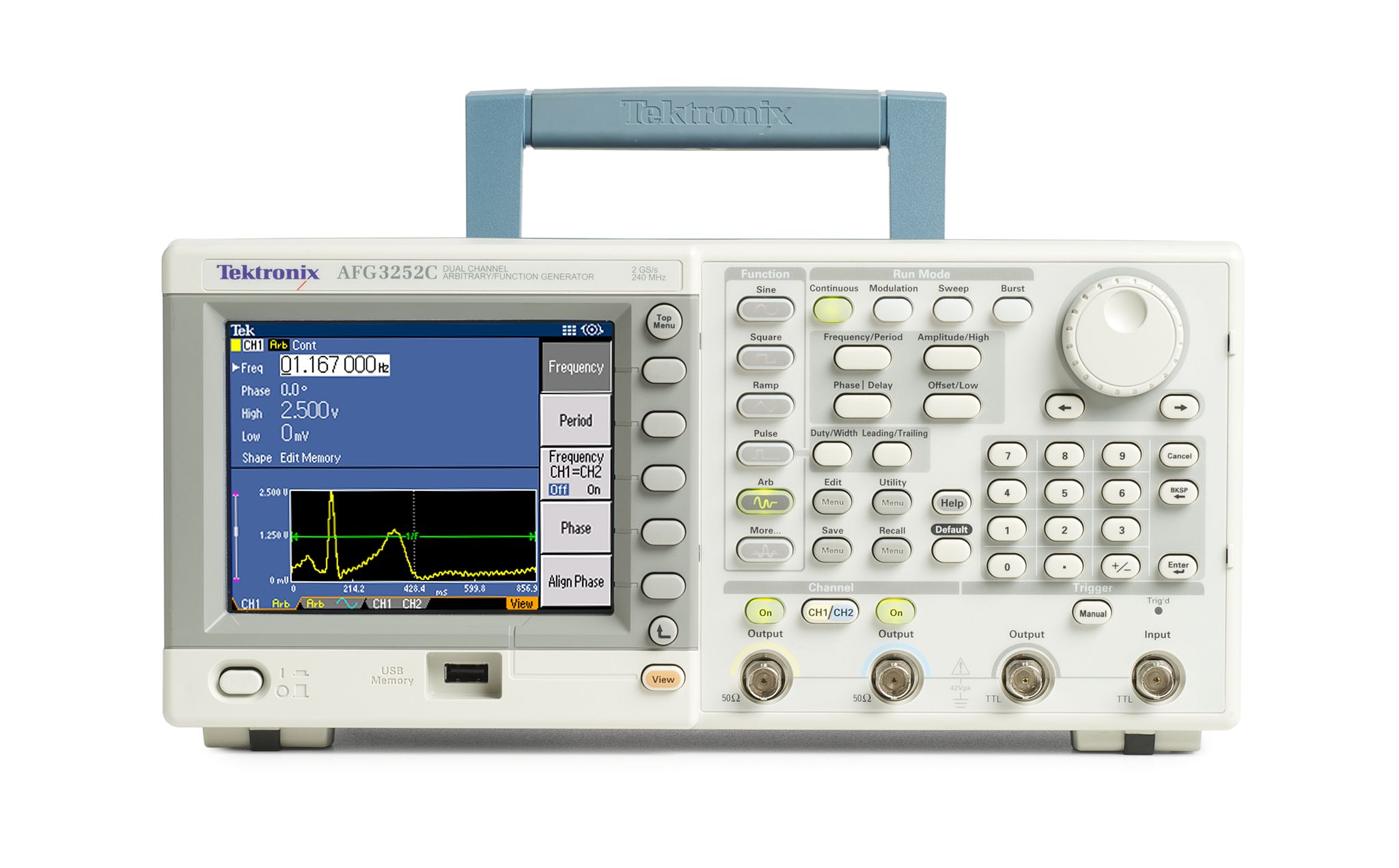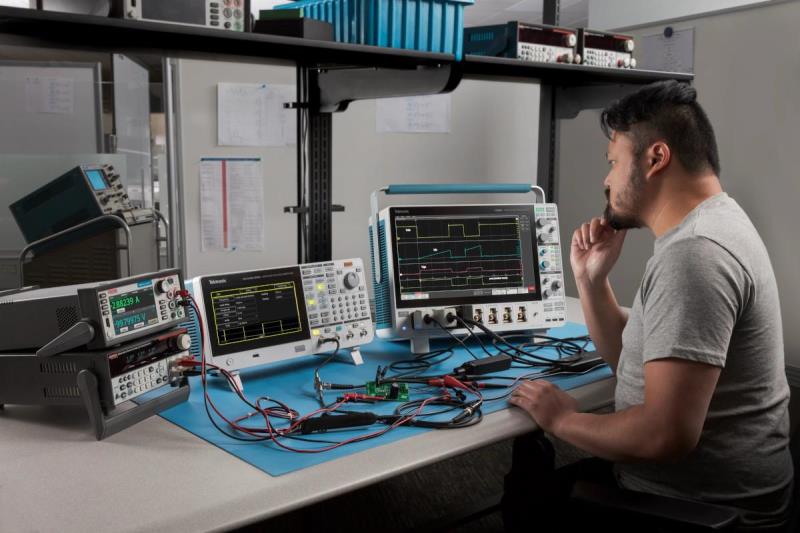
연락처
텍트로닉스 담당자와 실시간 상담 6:00am-4:30pm PST에 이용 가능
전화 문의
9:00am-6:00PM KST에 이용 가능
다운로드
매뉴얼, 데이터 시트, 소프트웨어 등을 다운로드할 수 있습니다.
피드백
임의 함수 발생기
최신 장비의 설계는 복잡한 경우가 많아 테스트 중 다양한 자극 신호가 필요합니다. Tektronix 함수 발생기는 탁월한 주파수 민첩성을 제공하고 매번 정확한 신호를 재현할 수 있는 동급 최고의 장비입니다.
표준 파형, 임의 파형 기능, 신호 손상 옵션이 사전에 탑재된 Tektronix 함수 발생기는 광범위한 분야를 지원하며 임의 파형 발생기의 고급 기능을 필요로 하지 않는 분야에 경제적인 솔루션을 제공합니다.
용도에 맞는 임의 함수 발생기를 찾아보거나 모든 Tektronix 신호 발생기를 살펴보십시오.
이 페이지에서 다루는 다른 내용
Tektronix 임의 함수 발생기 비교
| 비교 | 모델 | 아날로그 채널 | 샘플링 속도 | 대역폭 | 수직 해상도 | 레코드 길이 | 출력 주파수 범위 | 시작 가격 |
|---|---|---|---|---|---|---|---|---|
|
|
1 - 2 |
250MS/s - 2GS/s |
25MHz~250MHz |
14비트 |
16MSa/ch |
25MHz~250MHz |
US $3,200
|
|
|
|
2 |
125 MS/s - 300 MS/s |
25 MHz - 60 MHz |
14-bit |
8k points - 1M points |
25 MHz - 60 MHz |
US $1,290
|
|
|
|
1 |
250MS/s |
20MHz |
14비트 |
128k 포인트 |
20MHz |
How to choose an arbitrary function generator
Though there are a number of factors to consider when choosing the right arbitrary function generator for your bench, here are a few of the most important considerations.
| Consideration | Description |
|---|---|
| Sample rate | This affects the frequency and fidelity of the main output signal. The sampling frequency must be more than twice that of the highest spectral frequency component of the generated signal to ensure accurate signal reproduction. |
| Bandwidth | The analog bandwidth of a signal generator’s output circuitry must be sufficient to handle the maximum frequency that its sample rate will support. In other words, there must be enough bandwidth to pass the highest frequencies and transition times that can be clocked out of the memory without degrading the signal characteristics. |
| Record length | This determines the maximum number of samples that can be stored and plays an important role in signal fidelity because it determines how many points of data can be stored to define a waveform. Particularly in the case of complex waveforms, memory depth is critical to reproducing signal details accurately. |
| Output frequency range | Perhaps one of the most important considerations—and often the biggest driver of price—is the frequency range. It’s essential to choose a function generator that can operate in a frequency range that supports your tests. |
| Noise and jitter | These two characteristics are very closely related and are essentially undesired distortions of the signal, which you want to keep as low as possible. |
| Number of channels | Depending on the application needs, a single output may be sufficient. But for IQ modulation for instance, two outputs are mandatory. |
| User interface | A large, modern touchscreen with responsive feedback has become a key factor in labs where test time is essential. |
리소스
Function Generators FAQs
What is a function generator used for?

A function generator is a piece of electronic test instrument used to generate and deliver standard waveforms, typically sine and square waves, to a device under test. It can be used to test a design or confirm that a piece of electronic equipment is working as intended.
What’s the difference between a function generator and a signal generator?
A signal generator is any device that creates electronic signals. A vector signal generator specializes in creating RF signals with analog and digital modulation schemes in formats such as QAM, QPSK, FSK, BPSK, and OFDM.
A function generator is a specialized piece of test equipment that has a preset list of waveforms or patterns that it can play. Function generators are known for their ability to rapidly switch from one frequency to another and are a more economical option than other more advanced waveform generators.
How do function generators work?

A function generator connects to a device under test (DUT) via test leads and creates voltage waveforms at a desired frequency to the DUT. Using the instrument’s front panel, the operator can change the parameters of a waveform, such as how fast it’s played, the amplitude and offset, or add basic distortion or modulation.
What is the difference between a function generator and an arbitrary waveform generator (AWG)?
A function generator primarily produces standard waveforms like sine, square, and triangle waves, while an arbitrary waveform generator (AWG) can create more complex and custom waveforms based on user input. AWGs are often used for advanced applications like high-speed signal testing.
What types of waveforms can a function generator produce?
Function generators can produce a wide range of waveforms, including sine waves for AC circuit testing, square waves for digital signal testing, triangle waves for waveform analysis, and arbitrary waveforms for custom signal generation.
Can I synchronize multiple function generators?
Yes, many function generators allow synchronization through various methods such as external triggers or synchronization inputs/outputs. This is particularly useful for generating complex waveforms or multi-channel setups.


